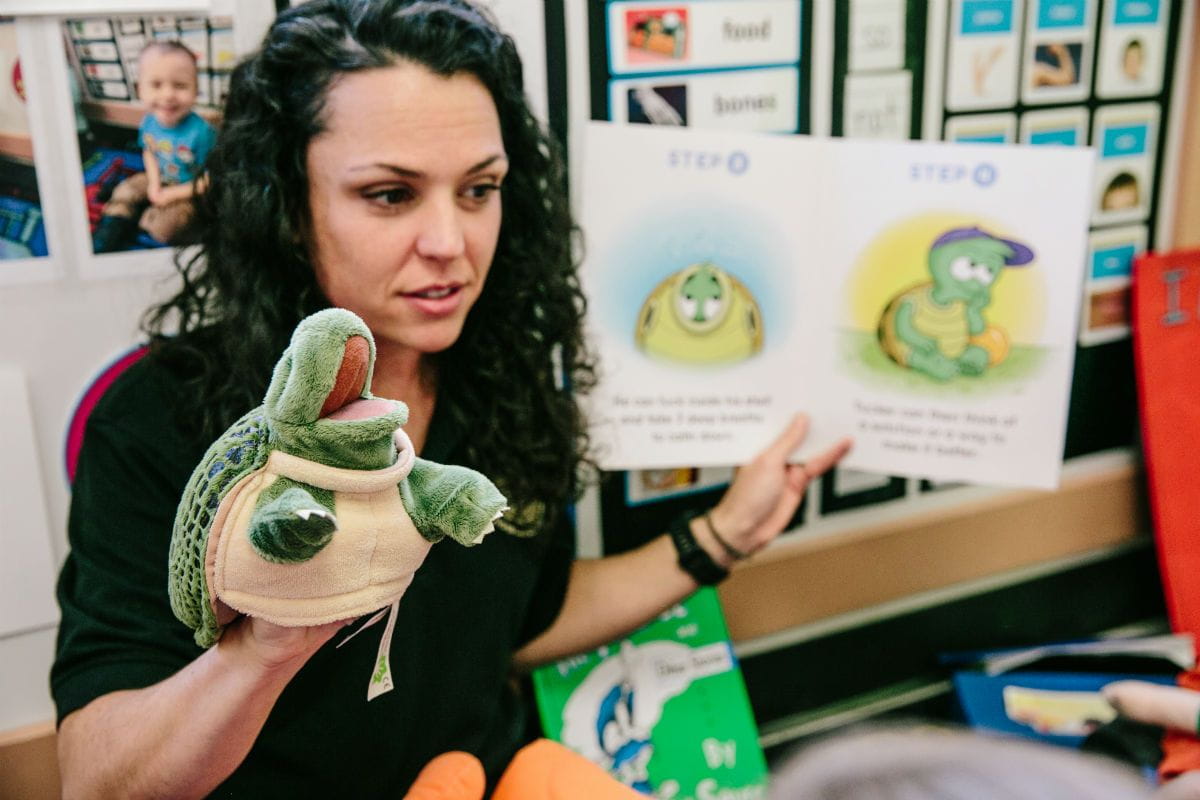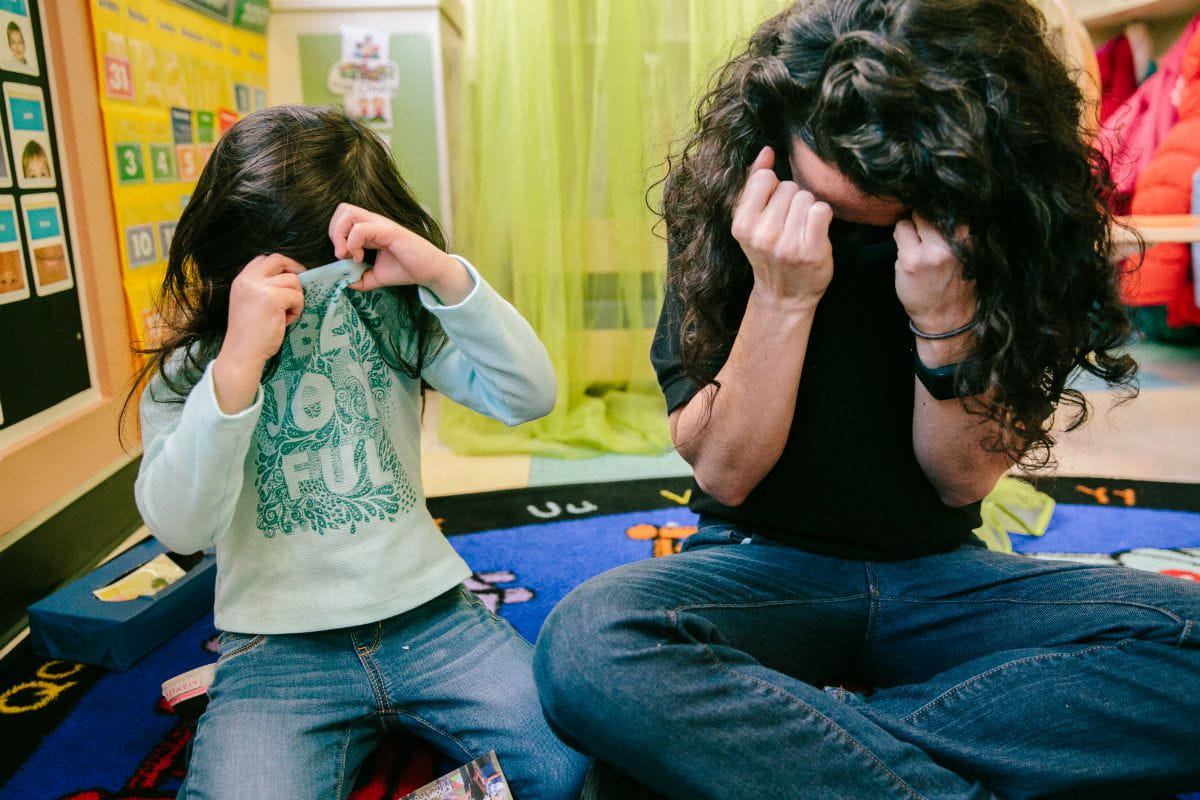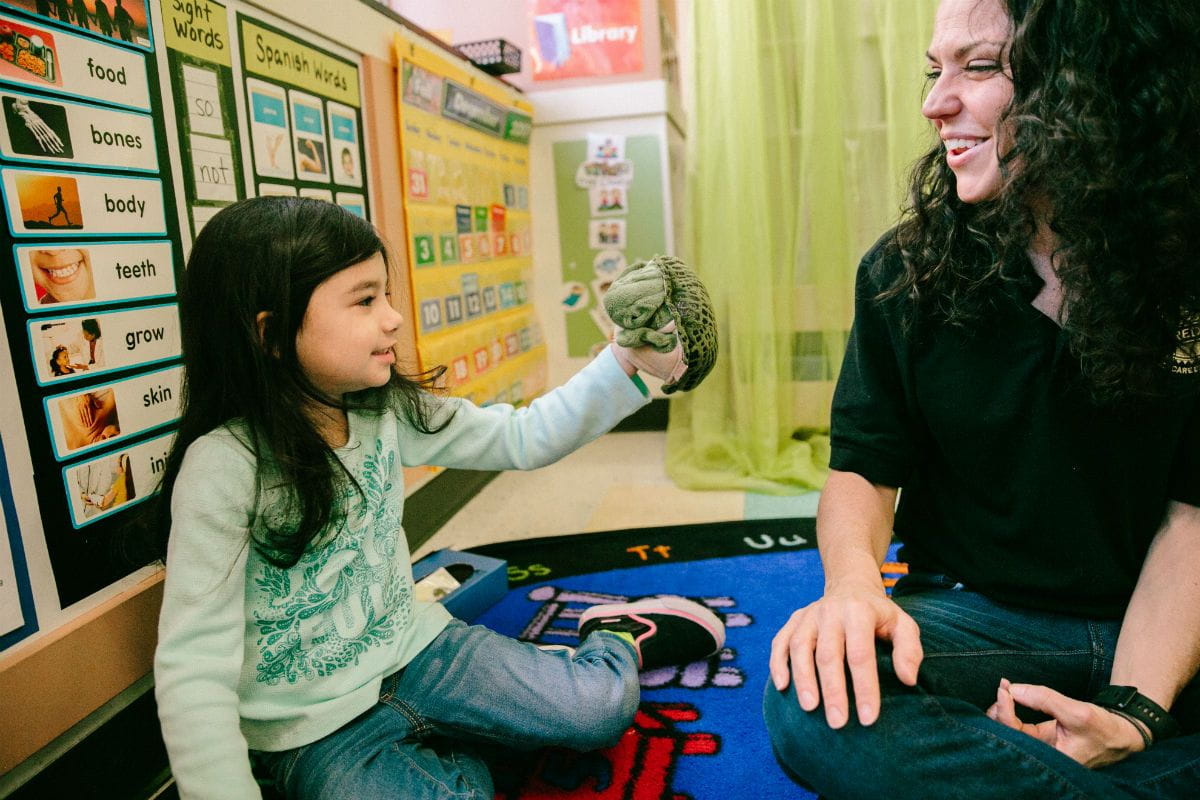Calm, Cool, In Control: How the Turtle Technique Helps Kids Manage Big Feelings

By Carolyn Sweeney Hauck
He’s soft. He’s cuddly. He hides in his shell when he’s feeling shy—or just needs to take a break from the world. Tucker the Turtle isn’t just an adorable turtle puppet (though adorable he certainly is.)
<p">KinderCare educators across the country use Tucker as a powerful teaching tool to show young children how to “stop, tuck, and think” (a.k.a. the Turtle Technique) before they, say, give in to overwhelming feelings, snatch a toy from a friend, or even whack a classmate on the head. Tucker the Turtle also happens to be a character in a story developed by positive-behavior expert and University of South Florida professor Rochelle Lenteni.</p">In the story, Tucker is a little turtle in preschool who, like many of his young fans, has major impulse-control issues: When he gets mad, he kicks, yells, and hits his classmates. That all changes when Tucker learns to “think like a turtle” instead. He keeps his body and hands to himself and stays quiet while taking three deep, calming breaths. Then, he starts to consider ways he can improve the situation that upset him—and just like that, Tucker has better control over his emotions. Behavior problems solved.

Tucker the Turtle to the Rescue
Teaching kids how to regulate their feelings, or rather “think before they act,” is a crucial part of early childhood education. “It’s important to remember that kids don’t automatically know how to regulate their emotions,” says KinderCare’s Manager of Individualized Education Services Taunya Banta.
And let’s face it, even when we know how to self-regulate, it’s not always easy—sometimes grown-ups need to take a few deep breaths every now and again, too. Self-regulation isn’t just about controlling negative emotions like anger and jealousy, though.
Consider, for example, the exuberant child who feels joyful and excited—but expresses it by running around in circles and screaming at the top of her lungs. It’s great that they’re happy…but screaming in the grocery store won’t get the best reaction from other shoppers.
“The goal is for children to be able to feel that joy and excitement, but also know how to regulate that emotion in a way that is safe and appropriate,” Banta says.
How The Turtle Technique Solves “Behavior Problems” in the Classroom
That’s what Tucker is there for: to help kids learn safer, easier, and more productive ways to get what they need or want. In the hands of a skilled early childhood educator, Tucker may make an appearance after, say, a child has been pushing their friends out of frustration. The teacher might tell a story where Tucker gets really frustrated, considers pushing his friends away, but then…reminds himself to “stop, tuck, and think.”
The teacher may ask kids to brainstorm different ways Tucker might handle his feelings: like finding a teacher or parent, ignoring an irritating or unkind act, saying “please,” sharing things, waiting, or taking turns.

In our centers, teachers work with parents to address behavior issues because we know that all behavior has meaning.
“Children use challenging behavior because it works for them—either to communicate or to get something they want. Parents and teachers have to figure out how the behavior is working for the child, and then teach them a new way to get the desired result,” explains Banta.
The Turtle Technique does just that. With compassion and empathy, it helps kids connect to a calmer place within themselves (inside their shell)... and helps them find kinder words and actions when they’re ready to pop their heads back out again.
</p">



.jpg?la=en&h=800&w=1200&hash=799F5BD6E84A71FB0D1C8E657FE7F226)
